Abstract
Ultracentrifugation of very dilute suspensions of herpes simplex virus directly onto monolayer cells grown in centrifuge tubes was studied. Enhanced infectivity by ultracentrifugation was similar at 4 degrees C and at 35 to 37 degrees C. The high infectivity levels of cultures centrifuged at 4 degrees C were further examined by infectious center assays. At 4 degrees C, the numbers of infectious centers in control (noncentrifuged) cultures were almost 100-fold fewer than in control cultures at 37 degrees C. However, the numbers of infectious centers in cultures ultracentrifuged at 4 degrees C were similar to those ultracentrifuged at 37 degrees C. The great difference in the numbers of infectious centers between 4 and 37 degrees C control cultures, in contrast to the similarity between 4 and 37 degrees C ultracentrifuged cultures, indicated that ultracentrifugation at 4 degrees C enhanced infectivity possibly by facilitation of herpes simplex virus penetration into monolayer cells.
Full text
PDF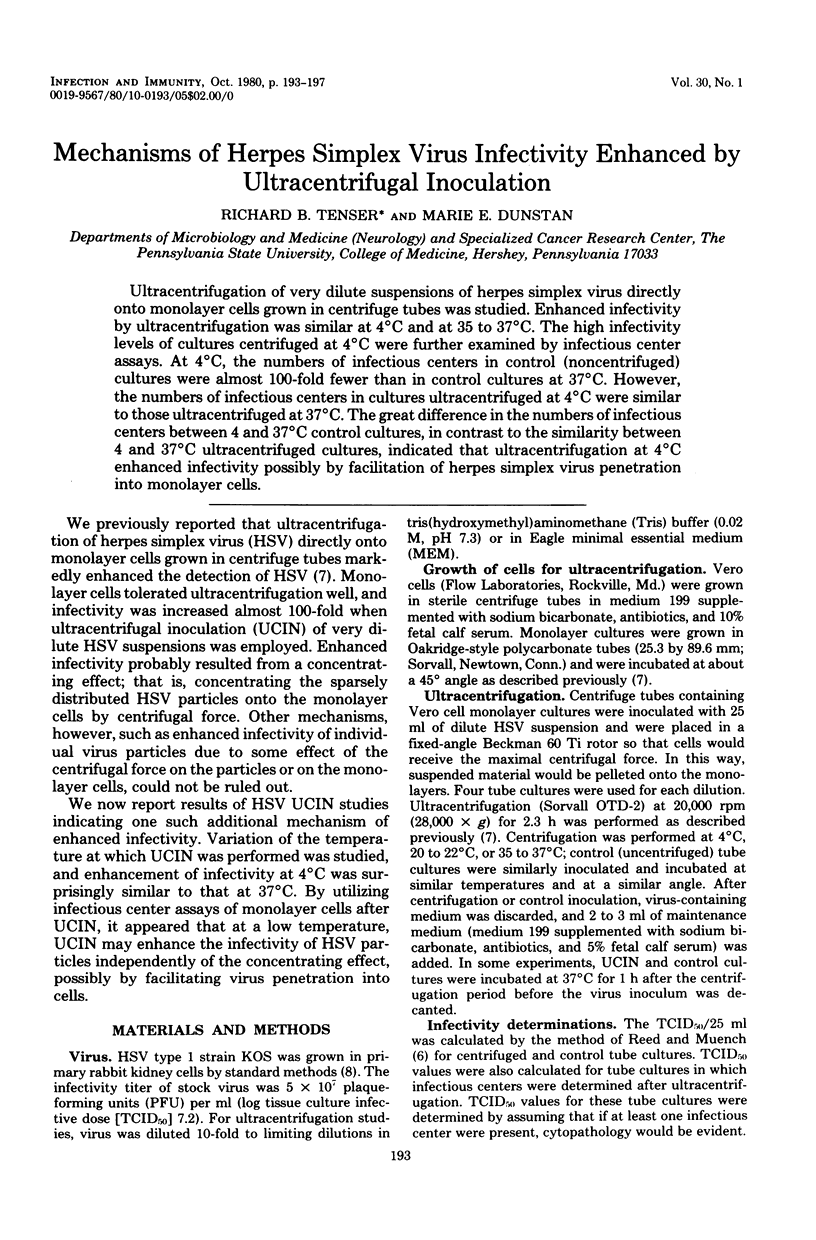
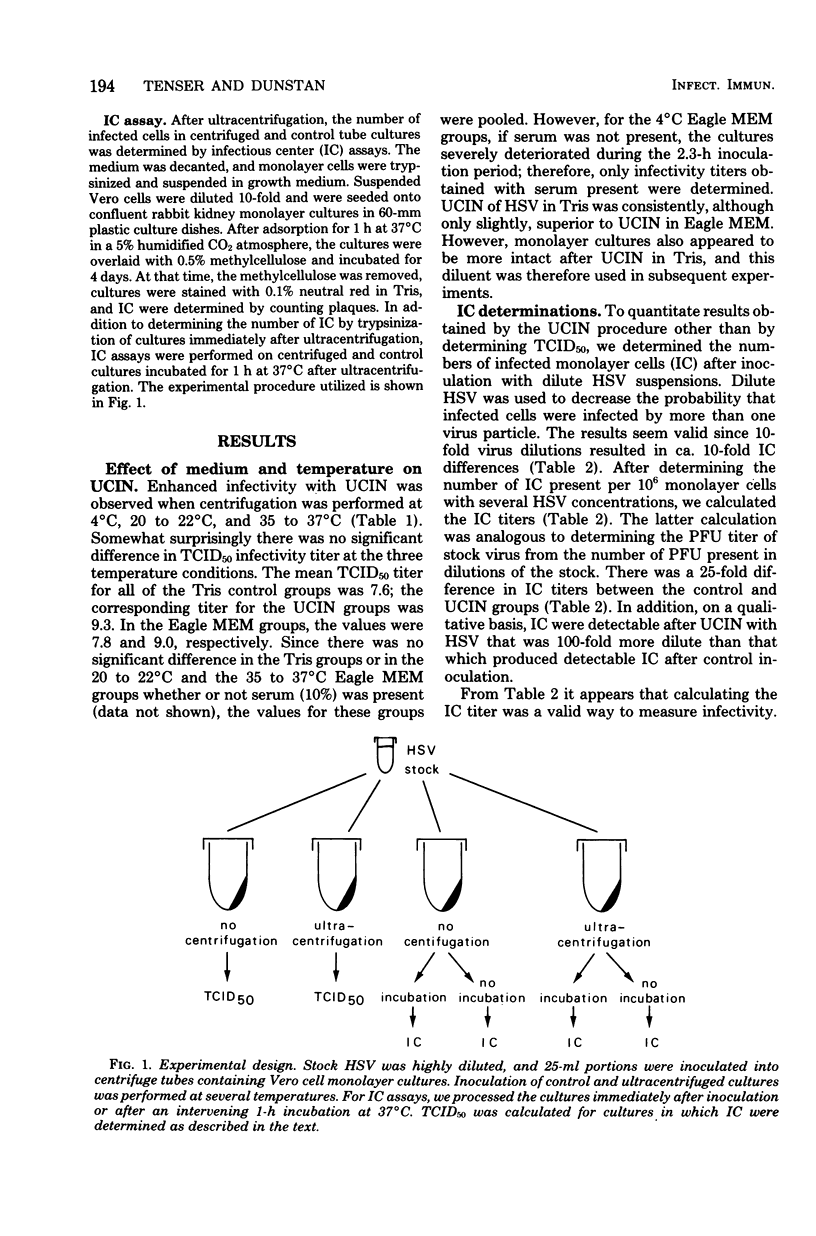
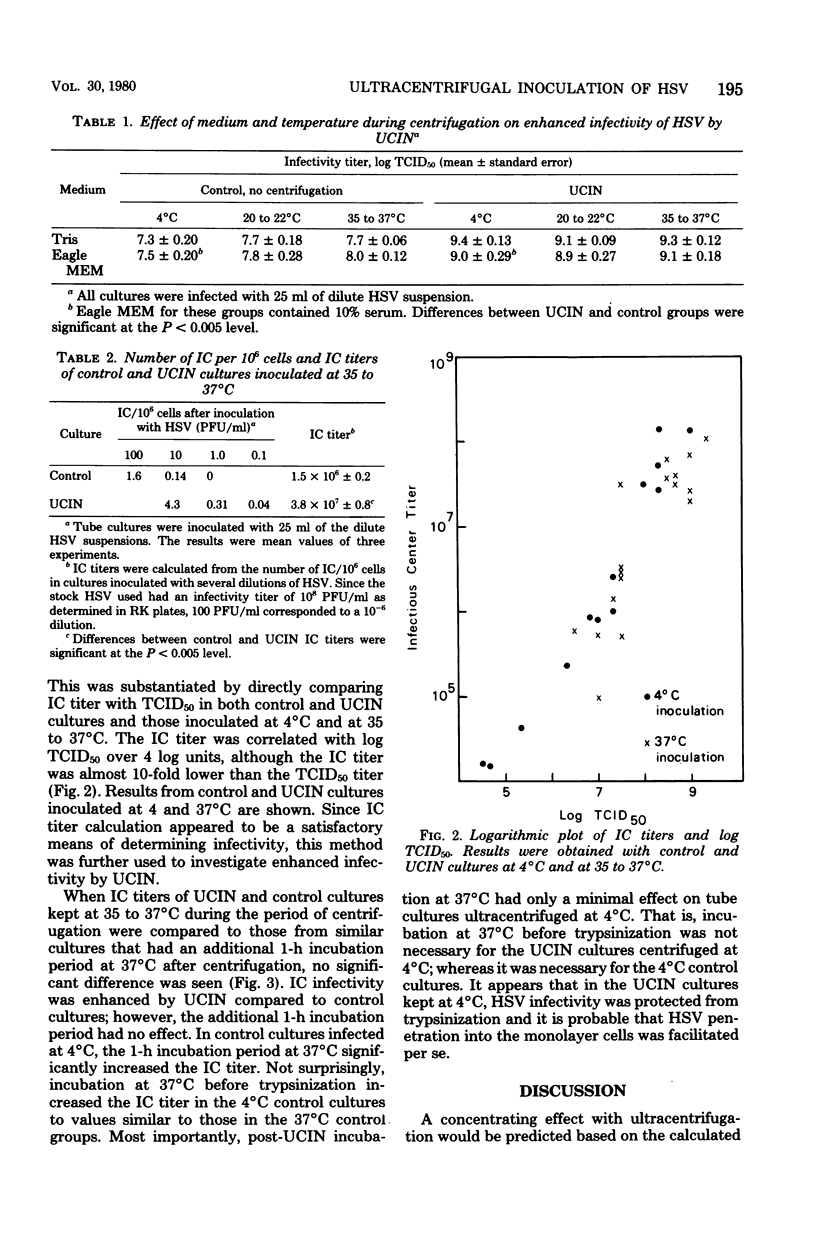
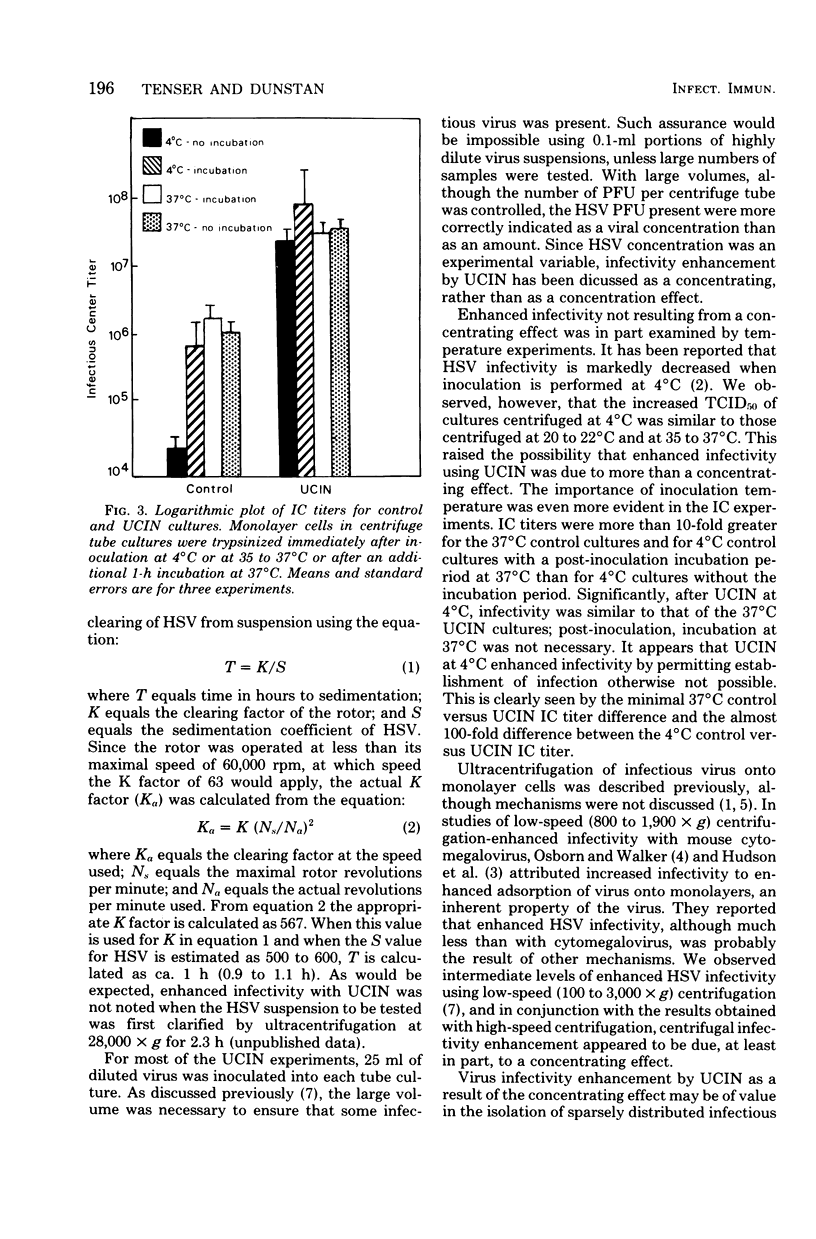
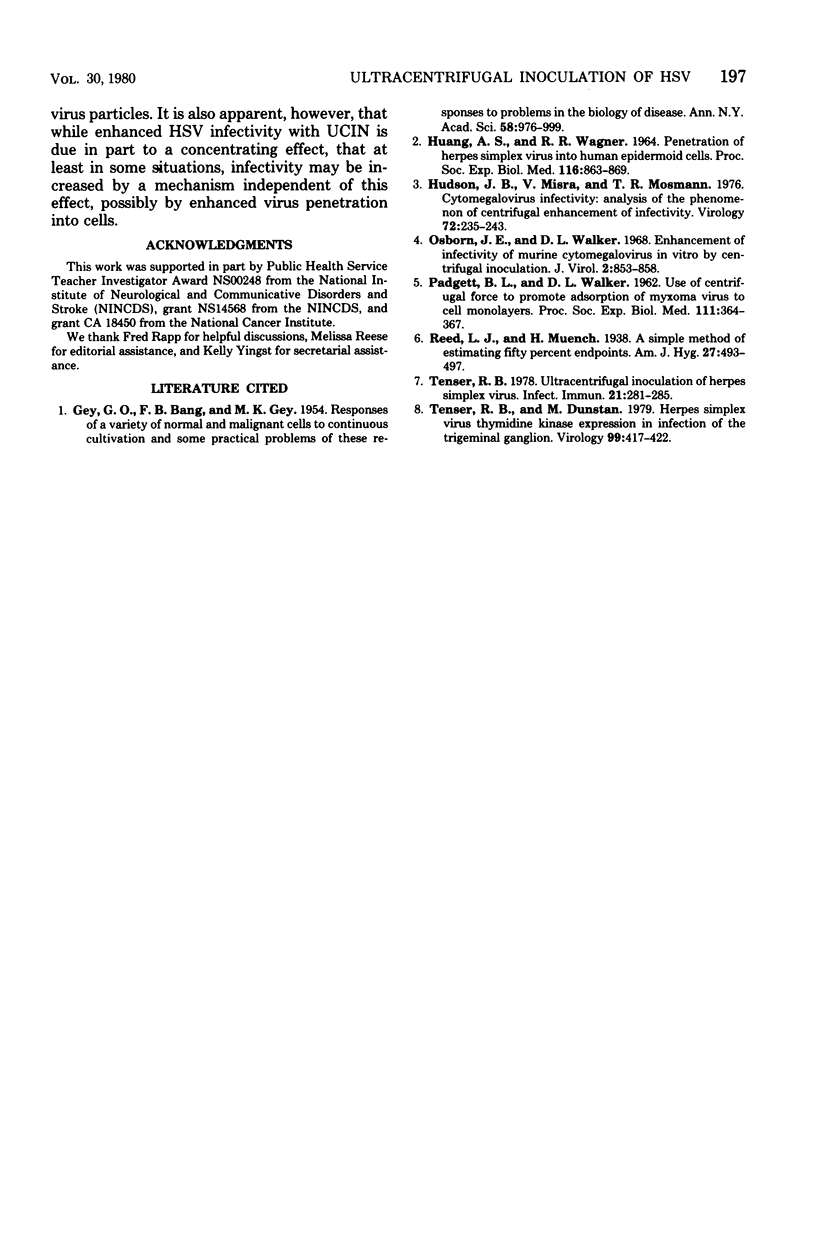
Selected References
These references are in PubMed. This may not be the complete list of references from this article.
- GEY G. O., BANG F. B., GEY M. K. Responses of a variety of normal and malignant cells to continuous cultivation, and some practical applications of these responses to problems in the biology of disease. Ann N Y Acad Sci. 1954 Nov 17;58(7):976–999. doi: 10.1111/j.1749-6632.1954.tb45886.x. [DOI] [PubMed] [Google Scholar]
- HUANG A. S., WAGNER R. R. PENETRATION OF HERPES SIMPLEX VIRUS INTO HUMAN EPIDERMOID CELLS. Proc Soc Exp Biol Med. 1964 Aug-Sep;116:863–869. doi: 10.3181/00379727-116-29392. [DOI] [PubMed] [Google Scholar]
- Hudson J. B., Misra V., Mosmann T. R. Cytomegalovirus infectivity: analysis of the phenomenon of centrifugal enhancement of infectivity. Virology. 1976 Jul 1;72(1):235–243. doi: 10.1016/0042-6822(76)90326-3. [DOI] [PubMed] [Google Scholar]
- Osborn J. E., Walker D. L. Enhancement of infectivity of murine cytomegalovirus in vitro by centrifugal inoculation. J Virol. 1968 Sep;2(9):853–858. doi: 10.1128/jvi.2.9.853-858.1968. [DOI] [PMC free article] [PubMed] [Google Scholar]
- PADGETT B. L., WALKER D. L. Use of centrifugal force to promote adsorption of myxoma virus to cell monolayers. Proc Soc Exp Biol Med. 1962 Nov;111:364–367. doi: 10.3181/00379727-111-27793. [DOI] [PubMed] [Google Scholar]
- Tenser R. B., Dunstan M. E. Herpes simplex virus thymidine kinase expression in infection of the trigeminal ganglion. Virology. 1979 Dec;99(2):417–422. doi: 10.1016/0042-6822(79)90021-7. [DOI] [PubMed] [Google Scholar]
- Tenser R. B. Ultracentrifugal inoculation of herpes simplex virus. Infect Immun. 1978 Jul;21(1):281–285. doi: 10.1128/iai.21.1.281-285.1978. [DOI] [PMC free article] [PubMed] [Google Scholar]


